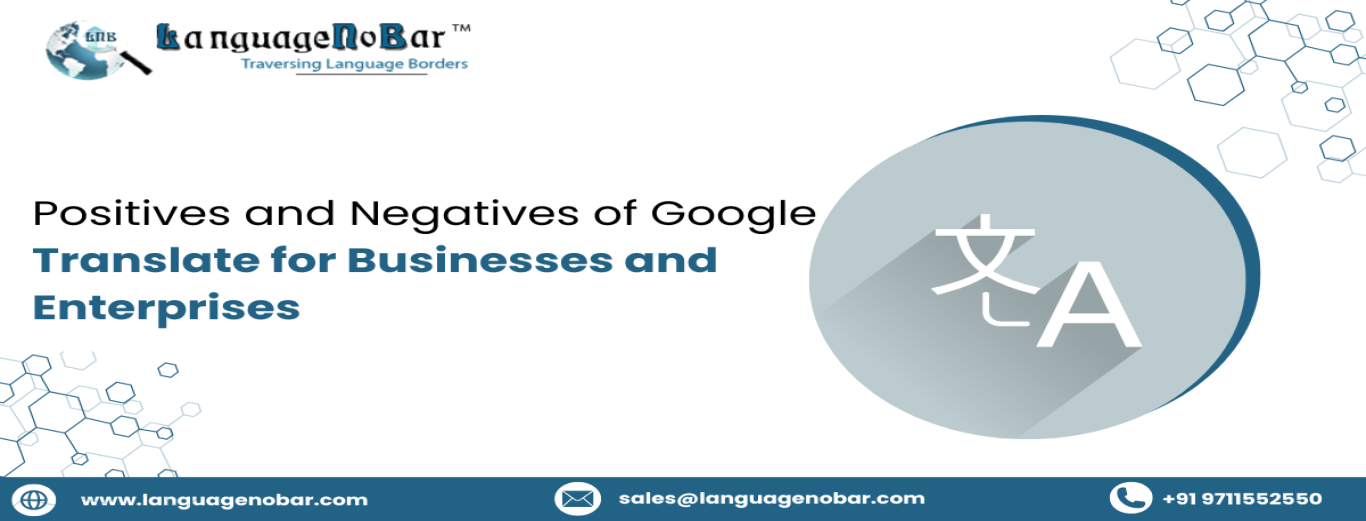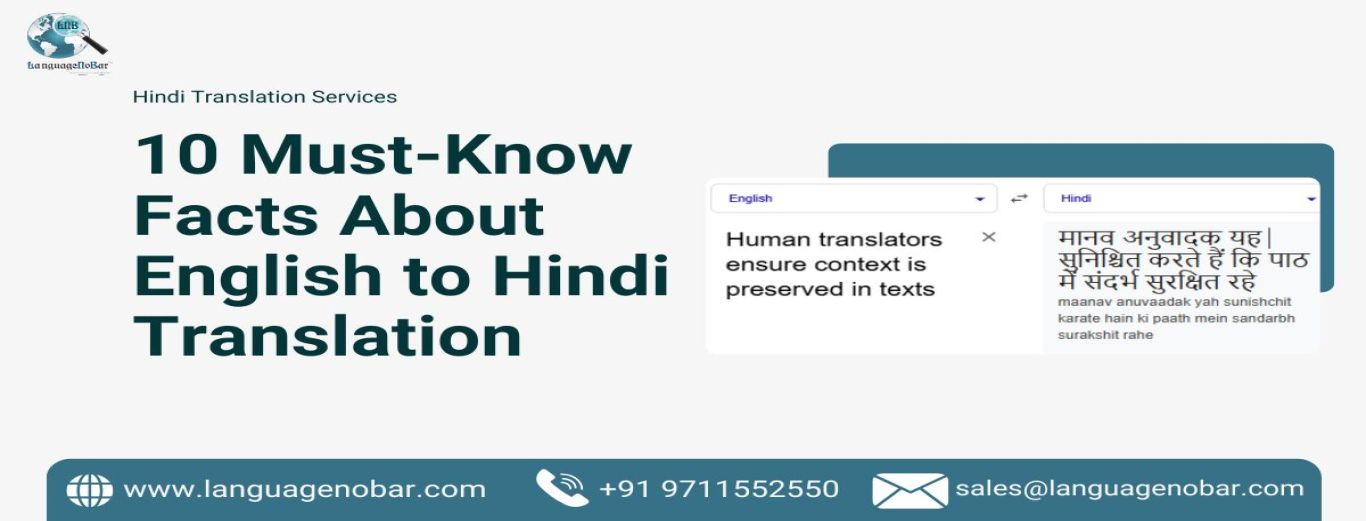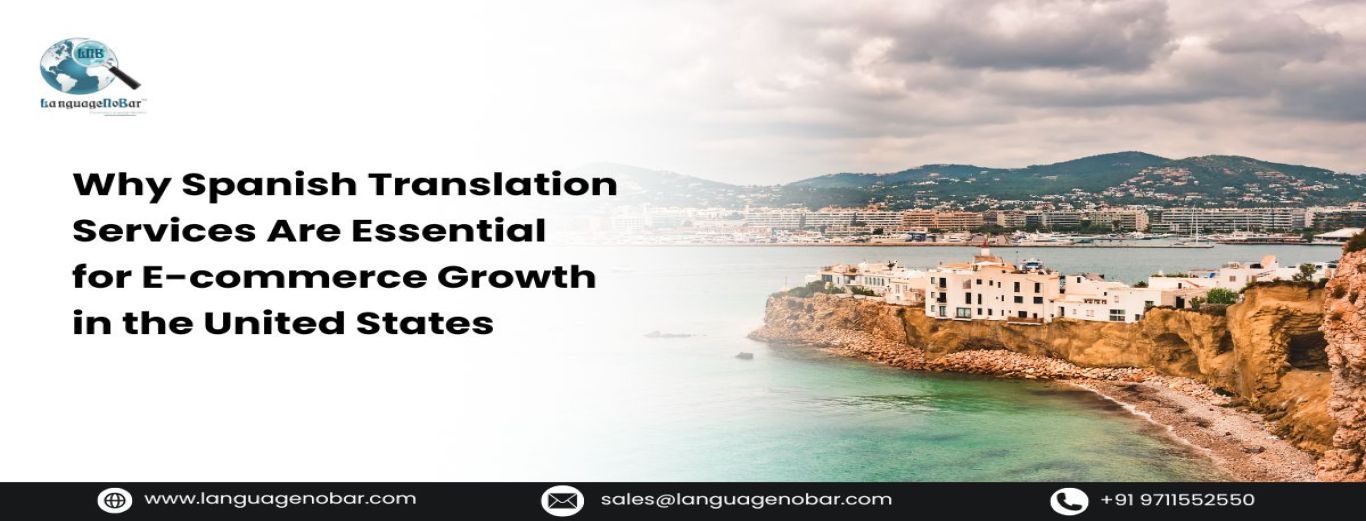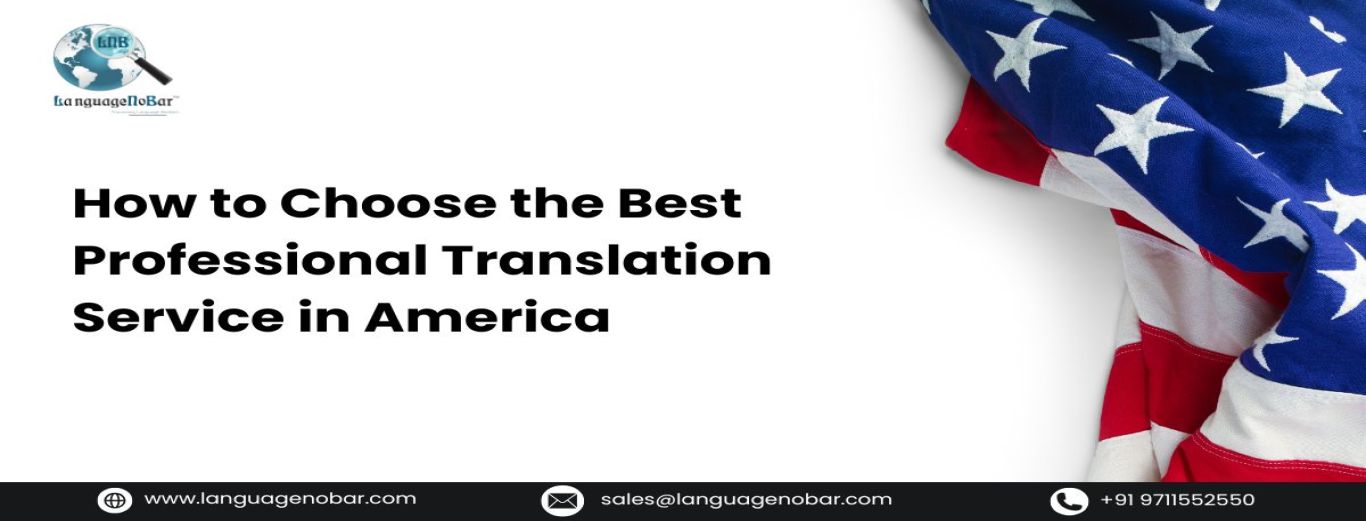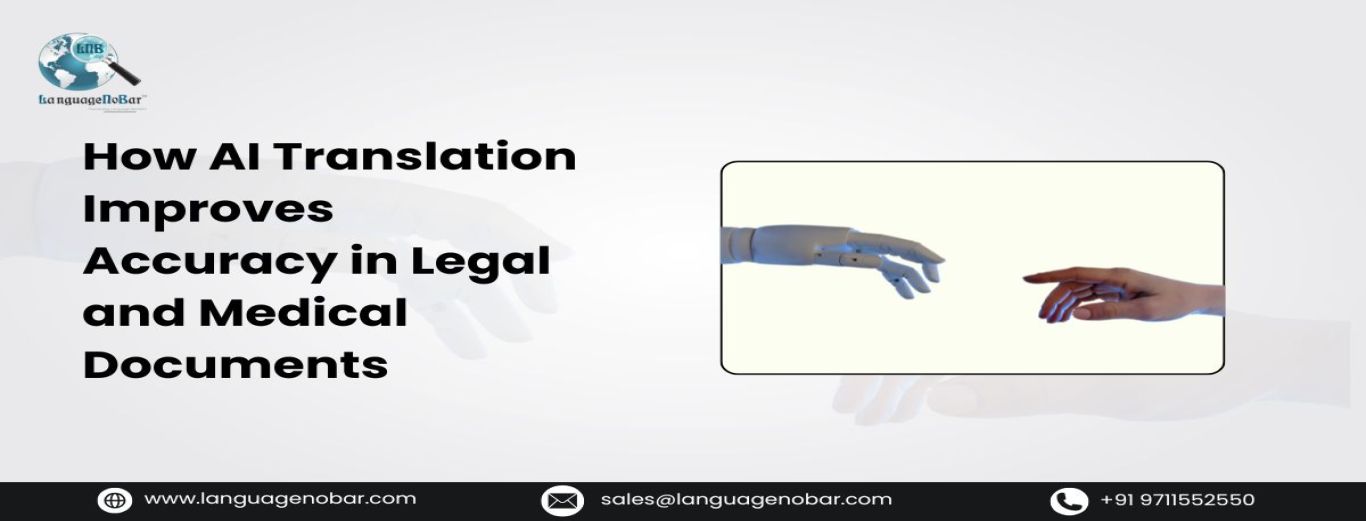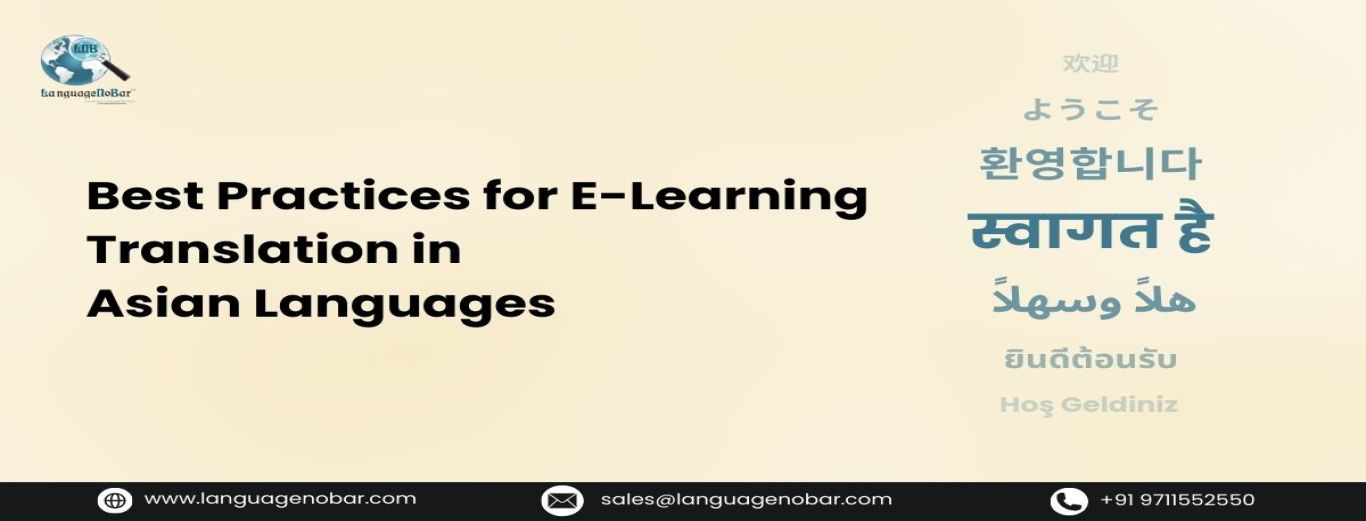Positives and Negatives of Google Translate for Businesses and Enterprises
- High quality translation services
- Comments (0)
Google launched its ‘Google Translate’ service in 2006 and eased the way for people who wanted to understand and interpret a foreign language. It brought instant, free, on-screen translations, meeting the needs of the monolingual generation. It piqued interest among users for its benefits like being free of charge, and its ability to work with many languages in the world. It does so by predicting the sequences of words with the help of an artificial neural network.
So does Google translate resonate in the bigger scheme of things? When it comes to businesses looking forward to translation, does it meet their business requirements and help in aiding their vision of resonating with global clients? Why is it that professional translation services remain a go-to for most C-suite leaders and corporate giants looking for the translation of their websites, documents, brochures, manuals, product descriptions, and more?
This blog sheds light on the positives and negatives of Google Translate and the “why” of it.
Google Translation Engine: The Intricacies
The Google Translate API works on a simple concept, wherein the user selects the input text’s language and the output language from a drop-down menu, and the text content automatically gets translated into the required language.
The current Googe translation engine uses the technology of neural networks in an attempt to improve the quality of its translations. In this method, “Google Translate “ is trained on languages, and neural networks are created. In this blog, we highlight the pros and cons of Google Translate and its ideal use cases.
The Pros of Google Translate
Google Translate is a choice for students and people who want to get a quick understanding of terms or words that they find hard to decipher on their own. Here are things that have worked in favor of Google Translate
- It provides quick, short translations (Input word count up to 5000 words).
- You get translations free of cost.
- It works best with a literary translation of the text.
- Can be used for translating content that doesn’t have major repercussions on business.
Having said that, in business, everything counts in the long run and can affect the brand image! So why is it that businesses shy away from employing Google Translate for their business? It boils down to several factors that we will discuss further, but the primary among those is the ambiguity that comes with not knowing what’s happening in the neural networks! The result of this ambiguity is what we call the negatives of Google Translate.
The Cons of Google Translate
Google Translate works wonders with the literal translation of words. However, it was when the novelty faded and it was applied to newer use cases, that it became evident that relying solely on literal translation from Google Translate had unexpected results.
1. Translation Quality Varies with Training Quality
As already stated since Google Translate works on the data it gets for training, if the quality of the training material low, so will be the result of translation! Simply said, it works on the principle that if the “input” is anywhere flawed, biased, or of poor quality the output will be of a similar nature. Google Translate relies on patterns and doesn’t “think” like humans do so all the output of Google Translate is more of math and probabilities. Each sentence is matched to the database, and the most frequently occurring translation is put together!
2. It Lacks the Ability to “Think” Rationally like Humans
If mindless translation is done without providing context, Google Translate could lead to serious blunders, like it happened for a location on the board of an Indian railway. The place “Hatia” was translated AND used on the board as “Murder”.
Image Credits: TimesNow
2. Accuracy issues with Different Language Pairs
Google Translate has varied labels of accuracy for different languages. A study published in Springer shows that with Google Translate the results vary considerably according to the language chosen, with accuracy rates ranging from 55% to 94% for different languages. Now the question is are businesses willing to take risks when it comes to critical or life-saving documentation or even regular documents where every hour spent on deciphering the wrong translation could lead to huge expenditure?
Image Credits: Springer
3. Failure with Complex Sentences
When it comes to complex sentences, and idioms peculiar to a language, Google Translation doesn't always give the right output. The translated results are one-dimensional bringing the literal definition of each word or phrase. Here pretty much is which means “very nearly” is mistranslated and could lead to wrong interpretations.
2. Lack of Coherence with Cultural Context
Google Translate fails to understand the cultural context, which adds to the woes.
It sometimes delivers confusing messaging and awkward translations that are unignorable in business and can shoo away potential buyers and adversely hamper global initiatives. The big hurdle with Google translation for business arises when the translated phrases and metaphors don’t make sense in another cultural context.
Google Translate has a history of failing terribly with culturally specific words. There are recent reports that suggest that not everything can be translated with Google Translate! The Vryeweekblad reports how Google Translate, translates “boeremeisie” to “peasant girl”! , which upon verifying we found to be true! The translations are due to the biased feeding/training of Google Translate.
3. Disadvantages of Using Google Translate for Business
History is full of examples where the most ambitious business projects have failed because of miserable translation errors, costing both reputation and business.
Legal, medical, manufacturing, and transportation industries have industry terminologies that are mistranslated leading to loss of business. Though Google Translate is free for use there is no formal non-disclosure agreement (NDA) signed, and hence your data cannot be termed as secure.
Businesses need to invest in certified translation services that keep their medical documents, financial reports, or documents secure and confidential. Google translation is good at common translations for some language pairs but for other languages, the results are far less than accurate.
4. Inherent Gender Bias with Google Translate
There is an inherent gender bias when it comes to Google Translate which was established in the recent paper on Gender Bias in Machine Translation. Google translate was the second most masculine system! This might pose as a problem when the world is rooting for equality for all and can be a huge red flag for businesses who might be seeing you as a potential partner.
Read: Top 10 translation companies in India to watch out for in 2024
LanguegNoBar- Human Translation Service That Stands for Accuracy
Our team of linguists at LanguageNoBar have a deep understanding of cultures and contexts and help you go beyond simply translating words. Our panel of linguistic experts has experience in translating content that communicates the original meaning, context, emotion, and tone of unique phrases and word structures. At LanguageNoBar, each project is handled by human translators with knowledge of domain-specific terminologies. We stand by our commitment to deliver accurate, reliable, secure translation jobs with quick turnaround times.
When you collaborate with LanguageNoBar, you can rest assured that your point gets conveyed in the best possible manner and aids the business goal of increasing engagement, customers, and sales.
Grow Your ROI with Human Translation
The Human vs Machine debate has picked up pace again with Gen-AI finding its application in many areas across industries. However, it is up to organizations to make a choice when it comes to a battle between machines and humans. Businesses need to understand that their win lies in employing translation resources that aid in their growth and reduce the risk of offending their target market. Collaborating with the right translation partner can have a significant impact on your bottom line in the long run.

